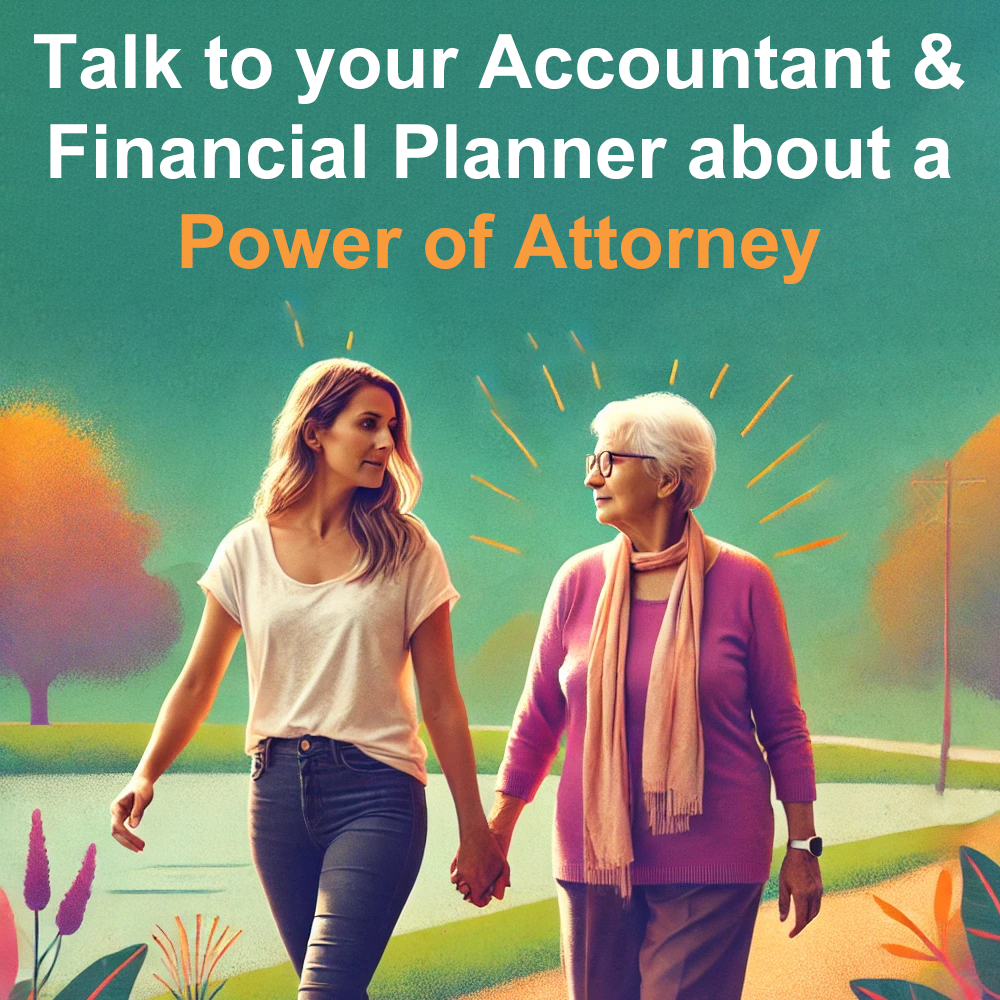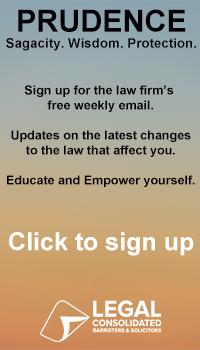Daughter charged with Elder Abuse
James Ash is in his mid-70s.[1] Living in a Victorian nursing home, he suffers from Parkinson’s disease. Before losing mental capacity, he appoints his daughter, Vanessa, as his Power of Attorney. Vanessa is a financial planner and a lawyer.
Shortly after, Dad is declared mentally incompetent. Vanessa takes control of her Dad’s bank accounts. She also controls his Family Trust and his Self-Managed Superannuation Fund. The SMSF exceeds $1.2 million.
What started as a kind act for her father, quickly turns into a malicious abuse of power.
Vanessa (and her recently bankrupted husband) operate a business called Ostrava. This is a financial planning business. Together they transfer Dad’s funds to Ostrava. They also sell his shares and invest the cash into Ostrava. Though Ostrava the couple invest his life savings into risky and speculative ventures.
They lose all of Dad’s money.
First Action regarding elder abuse
Vanessa’s sister became aware of the abuse and mistreatment of her Dad. She brought an action in the Victorian Court to stop Vanessa “wasting away” their Father’s money. The sister argued that Vanessa had:
* placed herself in a position of conflict; and
* had breached her fiduciary duties, by profiting from her position.
However, Vanessa has been protecting herself from the beginning. She was an experienced lawyer. She produced several documents all signed by her Dad. These included documents authorising:
* the conflict of interest
* her profiting from her position
* nominating her as Appointor of the Family Trust (the Appointor position controls the Trustee and the Family Trust)
With the support of these documents, Vanessa put forward three defences;
- All her actions were done with the informed consent of her Dad
- Her conduct was fulfilling the wishes of her Dad
- That she owed no fiduciary duties as she was acting in the capacity of his daughter and not his attorney
The Court decides it is elder abuse
Justice McMillan disagreed with her. The Judge held that:
1. the fiduciary duties attached to her actions
2. Dad placed ‘full trust and confidence’ in his daughter
3. Dad believed his daughter would protect his interests.
Therefore, the fiduciary duty owed as Power of Attorney extended to all her actions relating to her father’s financial affairs. Further, the court held Dad could not have provided informed consent. Given his fragile state, he was unable to comprehend the documents produced by Vanessa.
Therefore, Vanessa’s actions were declared invalid. Her father was granted financial compensation. But by that stage, sadly, there was no money left.
Second Elder Abuse Action
Around the same time, Ostrava went into liquidation. The company was worthless. ASIC started an investigation. It took the matter to the Federal Court. The Court held Vanessa and her husband had misled their investors. The Court prohibited them from giving financial service advice for 20 years.
Dad eventually received some financial compensation. This was because Vanessa still owned her law firm and was getting an income.
What Is Elder Abuse?
Elder Abuse is growing in ‘epidemic proportions’ since the early 2000’s.[2] One in twenty elderly Australians experiences abuse. The culprit? Often, someone, the person trusts.
This is elder abuse using a Power of Attorney.
Like James Ash, this has severe ramifications for your client’s financial assets and independence. It affects the ability to pay for services such as medicine and healthcare. Elderly people are less likely to report abuse by relatives. This is out of fear that they will completely lose their finances and independence. Commonly, the perpetrators threaten their victims. For example through withholding access to grandchildren.
Financial Planners and Accountants are best placed to expose children and strangers, taking control of their client’s assets. They are in the best position to protect their client’s assets and put safeguards, such as POA’s, in place. You can build these online here.
Signs to look out for:
Warning signs include:[3]
- a single, or repeated act or lack of appropriate action
- often occurring within a trusted relationship
- an expectation of trust between the parties
- the older person experiences harm or distress
Financial is the most common form of abuse. The studies suggest up to 5% of Australia’s elderly population falling victim.[4] It accounts for 40% of all reports made to the Elder Abuse Prevention Helpline (EAPU). [5] Financial Abuse often co-exists with psychological abuse. This is as children groom their parents to gain control over their finances. [6]
Although Australia has seen few Cases, incidents of abuse, including by Legal and Financial Advisors, is becoming more prominent. Worldwide, 1 in 6 Elders experienced abuse in the past year.[7]
Nephew abuse
Merle Peterson and her husband, Donald, were married for 55 years.[8] Within days, tragedy struck. Her husband suffered Alzheimer’s. And then her only child died.
At the age of 78, Merle was alone. Vulnerable.
Thankfully, her nephew Patrick McComb entered her life. He filled the void. Merle transferred $147,000 to him. She took out a loan of $250,000 and gave the money to the nephew to invest in a nightclub.
The lawyer, Eddie Jamison, represented both Merle and her Nephew. This is unusual as it is a conflict of interest. The lawyer selected the lender and completed all documents for the above loan. The lawyer even got a ‘referral fee’ of $4,000! He allowed himself to take $10,000 from the loan payout, to cover a loan owed by the nephew.
There was clearly a conflict of interest. Yet, the lawyer never disclosed this to Merle. He did not tell her to seek independent advice.
Merle, at age 78, now had a loan of $250,000. In the next month, her nephew took the money and disappeared. Merle had nothing.
Merle defaulted on the first payment. The lender initiated foreclosure on her home.
Merle died shortly after, leaving behind a debt of over $350,000.
Financial and Legal Advisors need to look after their clients – if not, the Court hold them accountable. Eddie, Merle’s “lawyer”, had knowingly aided and abetted Merle’s nephew. The lawyer failed to protect her best interests. He did not disclose the conflicts of interest.
Make sure you protect your client’s financial assets. Do not let them be the subject of elder abuse.
How To Protect Your Client?
We recommend that Financial Planners and Accounts watch out for warnings signs of elder abuse.[9] These include;
- Unpaid bills when your client has designated someone else to pay
- Missing Property
- Large or unexplained withdrawals of money
- New authorised signers on your client’s bank accounts
- Sudden changes in banks or attorneys
- Changes in spending patterns
- Excessive interest in your client’s finances by their children, relatives, and friends
Financial Planners and Accountants are in the position to be able to recognise these signs. They are able to help their client create a plan if they become incapacitated. Ensure your client has a signed Enduring Power of Attorney and Medical Power of Attorney. This allows you as their advisor to contact the right person if you suspect abuse.
At Legal Consolidated, we also provide the tools for your client to build their POA. This will allow your client to appoint the best person to make decisions regarding their assets. It makes sure that they act in your client’s best interest. Client unsure about whom to appoint as your POA? We can help you answer the online question.
Young and vulnerable children tool kit
Free resources to help protect young and vulnerable children:
- Vulnerable children in Wills – watch the training course
- Loans to children – in case they divorce or go bankrupt
- Divorce Protection Trusts in Wills – in case a beneficiary, child or grandchild separates
- Making Wills for your children
- Special Disability Trusts – for disabled children
- Life Estates do NOT protect children
- Child renounces a gift or Family Trust distribution for Centrelink and stop Trustee-in-Bankruptcy
- Children paying 32% on your super when you die
- Only disabled children can take your SMSF Reversionary Pension
- Child pays 66% tax on dead parent’s estate
- Dad’s Will: child vs charity
- Son loses farm to his two sisters
- Disabled dad has $9m, two children and no Will
- Court rewrites disabled Dad’s Will to protect children
Guide for Elder Financial Abuse
The Legal Consolidated makes the following suggestions as to the best measures which legal practitioners can adopt to mitigate risks, and
to identify and respond to the situation of clients who are potentially subject to elder financial abuse.
In making the initial arrangements for your engagement, give attention to the following:
1. The first meeting – how to check for elder abuse
Failure to properly identify the client exposes you to liability. Take care to identify to whom the service is offered and to ensure that any other direct or indirect influences are excluded.
1.1 For elder abuse identify who is the client
Failure to do so may lead to professional sanctions and personal liability for you.
Ensure that instructions are taken directly from the client and no others are present who might influence the client.
1.2 Have arrangements been made to take instructions directly from the client?
While it is recognised that the client may consist of more than one person, it is important to ensure that those persons have a common interest. If their interests become adverse, you must not unless your professional body rules are satisfied.
1.3 Is there a conflict? A sure sign of elder abuse
1.4 Talk to the client alone
The ideal arrangement is for you to see the client alone (or, if necessary, with a support person who has no interest in the legal transaction). Any person who may benefit should not be within sight or hearing.
1.5 Has adequate time been devoted to the meeting?
There needs to be sufficient time to enable an assessment of the client’s understanding and volition. The meeting should take place at a time and place that is appropriate to receive your advice.
1.6 Has the meeting been arranged for an appropriate time and place?
Ensure that the environment allows the client to take in what he or she is told. It may be necessary later to demonstrate that the client knew and approved the contents of their actions
1.7 Have you considered the atmospherics of the meeting?
1.8 Is an independent interpreter or support person required?
It is important to communicate with the client in a language with which both you and the client are conversant. If this is not possible, ensure that an independent interpreter, with appropriate credentials, translates the conversation. This often needs to be arranged in advance of the meeting.
In no circumstance should a person who has an interest in the transaction be involved in the translation.
You should be cautious about acting as an interpreter or translator in a matter in which they act.
1.9 Does it matter who pays your fees?
It does not matter who pays the bill; however, it is important to identify who is the client and to whom the bill is addressed. If the bill is to be paid by someone other than the client, you should consider any implications which could arise.
2. Meeting procedures to avoid elder abuse
When meeting with the client, consider:
If the person is not an existing client, and the arrangement for the meeting has been made by another person, you should ensure that the person has chosen you as his or her legal practitioner and understands that they may choose their own legal practitioner.
2.1 Have you identified yourself?
If someone instructs you to sell the home of the principal, the client is the principal.
If an attorney consults a legal practitioner to ascertain whether the attorney has authority to act for the principal, the client will be the attorney.
2.2 Does the client understand who is the client?
This defines your instructions. It may be important to explain the work that you cannot perform. Only advisers give financial advice. Only accountants give accounting advice. Only lawyers give legal advice.
2.3 Have you clarified what work the client wants you to perform?
This is a limited retainer. Clearly say what you are NOT doing.
2.4 Have you explained the transaction or actions?
It was said in Ryan v Dalton; Estate of Ryan [2017] NSWSC 1007 that “[You] should always consider capacity and the possibility of undue influence, if only to dismiss it in most cases”.
2.6 Have you checked for mental capacity to avoid elder abuse?
- drawing the client’s attention to both the negative and positive effects of the legal transaction;
- advising as to the propriety of the transaction, and warning the client against an improvident transaction;
- advising the alternatives available to the client; and
- advising the advantages and disadvantages of the alternatives.
It is necessary to ensure that the client comprehends the contents, nature and effect of the relevant documentation. To assess a client’s understanding, you should usually ask open questions. These may be necessary to obtain the required information and instructions without introducing bias or unduly influencing the client’s answers. Open questions will often start with the words like why, what, who, when and how. Open questions do not start with words such as do, is, can, will or has, as these words allow for a ‘yes’ or ‘no’ answer which may not aid in the assessment of a person’s understanding. The use of open questions is one tool among many which can be used to assess capacity.
2.5 Does the client really understand the transaction?
It has long been said that transactions must be “the offspring of [the client’s] own volition”. This issue is different from mental capacity.
Questions such as “Why are you doing this?” (or similar) are useful.
2.7 Have you checked for volition?
Some clients will want or need an opportunity to reflect on the advice given. Accordingly, unless there is a need for urgency, the client should be provided the opportunity to consider any documents and issues at his or her leisure. More than one meeting may be required to perform the client’s instructions.
2.9 Has the client been given an opportunity to reflect on the advice given?
Factors which may suggest a lack of mental capacity or abuse, pressure, exploitation, coercion and the like are:
2.8 Elder abuse warning signs
- regular changes to investments, Wills or powers of attorney within a relatively short period of time, especially to exclude a long-standing beneficiary or include a new acquaintance;
- changing advisers especially from the client’s long-standing adviser;
- use of an adviser who acts for the person benefitting from the transaction rather than an independent adviser;
- legal documents and transactions being produced or undertaken at the instigation of the person benefitting;
- the client disposing of almost all the person’s assets; or
- the client disposing of all his or her assets for nominal or no consideration.
3. Proof of elder abuse
You should take detailed notes of questions asked, answers provided and general observations. Take care to ensure that any notes taken are accurate.
This is particularly important where there are circumstances which may cast doubt on the client’s mental capacity, such as a long-standing diagnosis of dementia, hospitalisation or medical condition.
3.1 Have you taken detailed notes?
Notes should be made as soon as possible. It is not always possible to make notes simultaneously, however courts have in some circumstances accepted notes made on late the day of the interview, or on the day following it.
There is circularity in obtaining instructions to obtain an opinion on mental capacity which may disclose that the client did not have the mental capacity to give the instructions. However, there is no obvious and easily available approach which avoids this potential circularity. In most circumstances the solicitor could rely on the presumption of mental capacity.
3.2 Is it appropriate to seek a medical opinion?
If time, circumstance and the client’s instructions allow, you should consider obtaining a medical opinion about the client’s mental capacity, capacity to withstand pressure and any other appropriate issues.
3.3 Has a written authority been given for you to seek a medical opinion?
Retain file notes and any medical report for any period of time required by your professional rules (if any). In the absence of any such rule, as appropriate in the circumstances. This is because the necessity for proof can arise many years after work is performed. If it is not feasible to retain the whole file – which is the preferred situation – the most relevant records to the assessment of mental capacity should be retained.
3.4 Have you made arrangements to keep the important records?
If your accounting or financial planning practice is in doubt please telephone Legal Consolidated for a confidential discssion.
References
[1] Ash v Ash [2016] VSC 577.
[2] Mitchell Freedman, ‘The CPA’s role in the battle with financial elder abuse’ (2004) 18(5) Accounting Today 18, 18.
[3] Australian Law Reform Commission, Elder Abuse, Report No 47 (2016).
[4] Ibid.
[5] Ibid.
[6] Wainer J, Darzins P and Owada K, Prevalence of Financial Elder Abuse in Victoria: Protecting Elder’s Asset Study’ (2010) Monash University. <www.eapu.com.au/uploads/research_resources/VIC-Prevalence_of_FInancial_Elder_Abuse_MAY_2010-Monash.pdf>.
[7] Ron Acierno et al, ‘Prevalence and correlates of emotional, physical, sexual, and financial abuse and potential neglect in the United States: The National Elder Mistreatment Study (2010) 100(2) American Journal of Public Health 292.
[8] Craig Wood, as Trustee v Eddie B. Jamison No. B196898 167 Cal.App.4th 156, Court of Appeal, Second District, Division 6.
[9] Note, ‘Protecting mom & dad’s money’ (2013) 78(1) Consumer Reports 23.









